The relationship between dog and their human companion is very sacred. A dog enters human life and with the passing of time becomes their life itself. When a dog suffers from illness and injury their pet parents try and do everything to provide them relief. Torn ACL is one such injury which hampers the dog’s life adversely in this situation a thought of, “When to put a dog down with torn ACL?”
Might cross your mind.
Though putting a dog down might seem to be the cruellest decision if there is no other option left then what to do? No need to stress if your dog is suffering from a torn ACL it is not always required to put them down.
Through our blog, we will provide you with all the required information regarding torn ACL and all factors related to it. We will dive into the depth of this topic making you aware of all the treatment options and when as the last resort you can decide to put down your dog.

What Is a Torn ACL?
A torn ACL (anterior cruciate ligament)[1] is nothing but an injury that affects a dog’s knee joints. ACL is band tissue which connects the femur the thigh bone with the tibia the shin bone. The main function of ACL is to stabilize the functioning of the knee.
As the ACL acts as a connecting tissue if it gets torn then affects directly the mobility of the dog. A torn ACL causes unbearable pain and swelling to your dog and affects their quality of life. A dog with a torn ACL is prone to walk less and his mobility too is restricted this gives rise to many other health issues in the dog.
This injury further leads to arthritis, obesity, diabetes and many serious health issues. Dog breeds like Labrador, German Shepherds and rottweilers are more prone to suffer from this torn ACL. Torn ACL if not treated as early as possible then can increase the complications.
The main reasons behind the dog’s ACL getting torn are:
- Sudden twisting
- Unexpected forceful landing
- Pressure due to increased weight
- Ageing
- Knee injury
Symptoms of a Torn ACL in Dogs
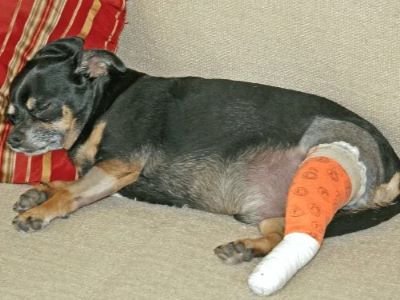
Here are the symptoms to look for to know if your dog is suffering from a torn ACL:
- Limping: If your dog is applying pressure on his legs while walking and dragging the leg then you must consult a vet. If you spot your dog limping consult a vet immediately as it can be a serious issue or a sign of a torn ACL.
- Crying: If your dog suddenly starts whining and crying while walking or when you touch his legs, then be alert. Normally dogs don’t cry and whin without reason, so if your dog is doing so then he needs help.
- Swelling: For a dog with a torn ACL one of the easily identifying symptoms is swelling. If you notice your dog’s knee swelling then get his knee x-ray done as soon as possible.
- Reduced activity: As the torn ACL affects the knee joints of dogs, this results in a reduction of their activity level.
- Trembling legs: Due to a torn ACL the balance between the dog’s joints destabilizes leading to trembling and shaking while walking.
Diagnosis of a Torn ACL in Dogs
Here are the ways for the diagnosis of a torn ACL in dogs that generally vet follows:
- Knowing the details of when the issue started developing and the reasons behind it. Getting the details of how the injury happened helps a vet estimate the severity of the injury.
- Physical examination, and monitoring of the dog’s temperature, pulse, and weight. This is a common procedure followed by a vet for any health issues.
- A vet may palpate your dog’s knee to identify any abnormality and pain.
- As the final step of diagnosis, the vet will opt for the x-ray to identify how deep the torn is or is any other issue. X-ray helps to know the level of issues and if there is any fluid build-up there or not.
- After all these steps of diagnosis, the vet gets a clear picture of your dog’s medical condition. This makes it easy for the vet to treat a dog.
Treatment Options for a Torn ACL in Dogs
The treatment for an ACL in a dog varies according to the dog’s condition. Apart from this dog’s previous medical history and the owner’s decision also matter in choosing the treatment options for dogs. Here are some treatment options for a torn ACL in dogs:
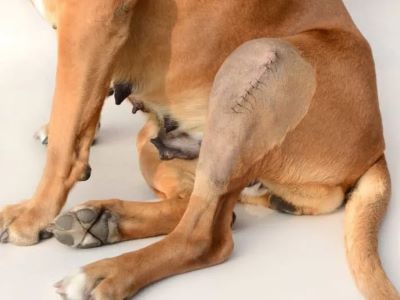
Surgery
To treat a dog’s torn ACL one of the options is to opt for surgery. The surgery requires either a replacement or repair of the dog’s damaged ligament. Surgery is the most preferable option as it helps the dog to get back to normal knee functioning. Surgery does not affect the dog’s quality of life and helps him to get back to normal routine.
The recovery period of surgery is somewhat between 6 to 8 weeks. Though the surgery is effective it may at times be expensive too.
As mentioned by Christina Fernandez, DVM in petmd, "When your dog comes home after their ACL surgery, restrict their activity according to your vet’s recommendations. Your vet will likely suggest no running, jumping, or stair-climbing for several weeks. Usually, the veterinarian will recommend strict crate rest for the first 10-14 days for incision healing. After this, they will recommend a slow introduction of activity where you can take your dog on slow, controlled leash walks for the next couple of weeks at home."
Conservative management
For dogs with underlying issues like ageing, obesity or previous surgeries may not be a suitable and preferable choice. For such dogs, you can opt for conservative management which requires to be treated with oral medications and supplements.
Your vet will prescribe painkiller medication and anti-inflammatories, and advice some physical therapy. In this type of treatment, you may have to restrict your dog’s physical mobility and provide them with a safe and secure environment. You may need to rearrange your dog’s diet to make him lose weight.
Unlike surgery, this treatment might be time-consuming and may not show effect if the tear is severe.
Orthopaedic brace
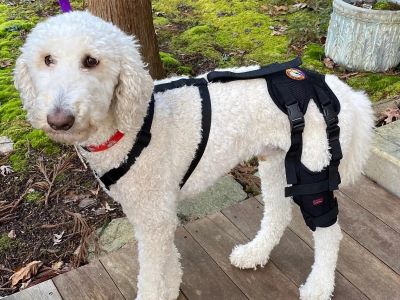
The orthopaedic brace is a device that has to be fitted around a dog’s knee to provide support. This brace helps reduce the pain and improves stability. Alone orthopaedic brace may not help cure your dog. For the dogs who have gone through the surgery and are on medications, these braces have proven helpful.
These orthopaedic braces need to be cared for properly by cleaning them frequently and to see their results they need to be fitted properly.
Recovery and Rehabilitation for a Dog With a Torn ACL
Recovery and rehabilitation are the most important and crucial steps for a dog with a torn ACL. Here are the steps involved in recovery:
- For recovery dog needs to rest properly, after the treatment make sure your dog remains in one secured room. Do not keep the dog on a leash and keep all the distractions away.
- Restrict all the walking, playing and other physical stimulation of your dog.
- Provide your dog with natural supplements like glucosamine and chondroitin which helps with the joint issue.
- Provide your dog with a good massage and keep doing the icing from time to time.
Make your dog do some stretching and motion exercises for speedy recovery and to keep the slight mobility on.
Prevention and Management of ACL Injuries in Dogs
Here are the ways to prevent and manage ACL injuries in dogs:
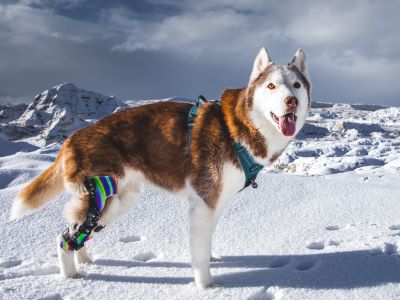
- Keep your dog’s weight in control, this will lead to less application of pressure on the dog’s ligaments and joints and help prevent ACL injury.
- Keep your dog away from slippery floors, and stairs, to prevent ACL injury.
- Provide your dog good balanced diet rich in calcium and magnesium. This will help to keep your dog’s bones strong.
- Make your dog exercise regularly, this will keep your dog fit and healthy.
When To Put a Dog Down With Torn ACL?
The decision to put a dog down with a torn ACL is a tough decision for any paw parent. Putting a dog down means ending its life and it should be the last resort to consider. Before deciding to put down your dog try all the medical treatments and therapy that can make your dog recover again.
The decision to put down a dog with a torn ACL should only be taken if it affects your dog’s life quality. Here are the factors when you can consider taking this decision:
The severity of injury
Generally, dogs with minor torn ACLs recover easily with medication and surgery, but if the torn is major then it may take time. Most dogs with torn ACLs face a lot of issues and their recovery just becomes stagnant.
Even after the proper medications and surgery, the severity of the injury shows no recovery or reduction. If a situation like this occurs then you can consider putting down your dog, to relieve them from the pain.
Age of a dog
Younger dogs with torn ACLs tend to recover faster as compared to older ones. People generally put down old dogs with severely torn ACLs. The old and ageing dogs already are going through numerous health issues, and having a torn ACL along with it just worsens their situation.
Old dogs have already lived their life enough and if living further means living with pain and discomfort then it is not a sensible thing to do.
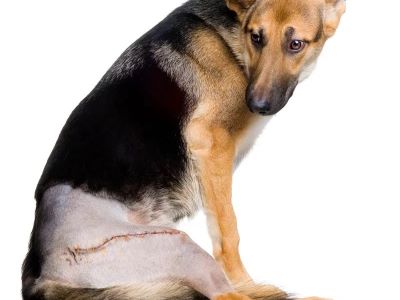
Quality of life
A torn ACL badly affects the dog’s quality of life and hampers their health. As the effect of a torn ACL, a dog suffers from swelling, pain, lameness, and reduction in mobility. Your dog is not able to live the life he was living earlier.
This unwanted isolation makes the dog bored, tired, anxious and depressed to the next level. With so much restriction and discomfort the dog’s quality of life just turns worse day by day. Witnessing the serious situation you can decide to put your dog down.
Treatment cost
The basic and average ACL surgery cost for your dog will somewhat cost you around £2,000 in the UK. This cost may vary depending on the injury and its requirements. The surgery cost is inclusive of all the post-medical care expenses however this may increase to take proper care of your dog.
Many people cannot afford the surgery and medical expense of a dog suffering from a torn ACL and thus this can influence them to take the decision to put their dog down.
FAQs
Can a dog live a happy life with a torn ACL?
No, a dog cannot live a happy life with a torn ACL. A torn ACL is a condition that affects a dog’s knee joint, which results in pain and arthritis in a dog. If ACL is not treated then it will just worsen with time leading to more discomfort. With such pain and discomfort, a dog cannot live a happy life.
Is it painful for a dog to live with a torn ACL?
Yes, it is painful for a dog to live with a torn ACL. The severity of the pain depends on what extent the ACL is torn. Further ACL affects the dog’s mobility to a great extent which acts as a restriction to their walking.
When to put a dog down with torn ACL?
Although it is not humanitarian to put a dog with ACL down, there are many factors that might force you to do so. If your dog’s ACL is torn to various serious extent and if your dog is suffering from unbearable pain even after treatment then you can think of putting a dog down.
How long does it take for a dog’s ACL to heal without surgery?
The dog’s ACL recovery duration without surgery has a lot to do with the seriousness of the injury. For a dog with severe ACL surgery is a must but if the torn is minor then without surgery with just medication a dog can recover within 6 to 12 months.
How can I treat my dog’s torn ACL at home?
To treat your dog’s torn ACL at home you need to start by making them lose their weight, it will help to a great extent. Weight loss will help in the reduction of pressure on the dog’s knee. Then restrict the dog’s activity and provide them with rest.
Conclusion
We hope that through our blog, “When to put a dog down with torn ACL?” we have successfully helped you with your query. People may consider putting dogs down and it surely is but what if fate is not in your favour? Many a time a situation out of your expectations arises making you make some tough decisions and putting a dog down is one such decision.
Before putting your down you should consider all the factors and upon the vet’s advice should go with it. If there are any chances of your dog’s recovery then try considering it.
Reference:
- CCL injuries in dogs: What they are, how to fix them – Veterinary Medicine at Illinois. (2023, May 8). Veterinary Medicine at Illinois.



